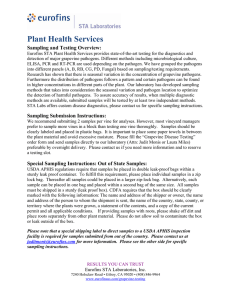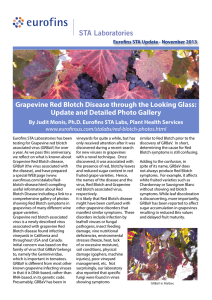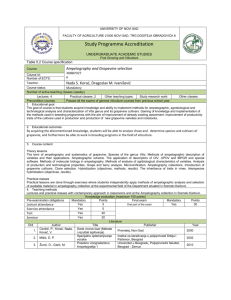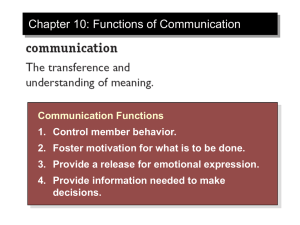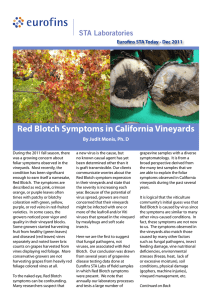Plant Health Services Sampling and Testing Overview:
advertisement
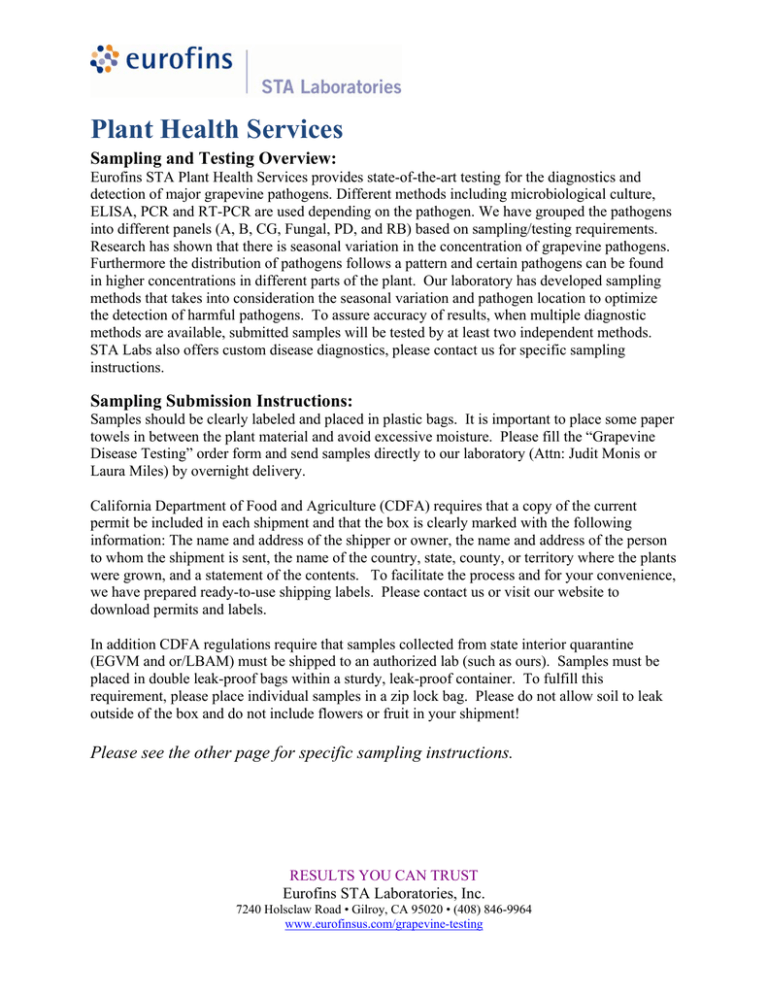
Plant Health Services Sampling and Testing Overview: Eurofins STA Plant Health Services provides state-of-the-art testing for the diagnostics and detection of major grapevine pathogens. Different methods including microbiological culture, ELISA, PCR and RT-PCR are used depending on the pathogen. We have grouped the pathogens into different panels (A, B, CG, Fungal, PD, and RB) based on sampling/testing requirements. Research has shown that there is seasonal variation in the concentration of grapevine pathogens. Furthermore the distribution of pathogens follows a pattern and certain pathogens can be found in higher concentrations in different parts of the plant. Our laboratory has developed sampling methods that takes into consideration the seasonal variation and pathogen location to optimize the detection of harmful pathogens. To assure accuracy of results, when multiple diagnostic methods are available, submitted samples will be tested by at least two independent methods. STA Labs also offers custom disease diagnostics, please contact us for specific sampling instructions. Sampling Submission Instructions: Samples should be clearly labeled and placed in plastic bags. It is important to place some paper towels in between the plant material and avoid excessive moisture. Please fill the “Grapevine Disease Testing” order form and send samples directly to our laboratory (Attn: Judit Monis or Laura Miles) by overnight delivery. California Department of Food and Agriculture (CDFA) requires that a copy of the current permit be included in each shipment and that the box is clearly marked with the following information: The name and address of the shipper or owner, the name and address of the person to whom the shipment is sent, the name of the country, state, county, or territory where the plants were grown, and a statement of the contents. To facilitate the process and for your convenience, we have prepared ready-to-use shipping labels. Please contact us or visit our website to download permits and labels. In addition CDFA regulations require that samples collected from state interior quarantine (EGVM and or/LBAM) must be shipped to an authorized lab (such as ours). Samples must be placed in double leak-proof bags within a sturdy, leak-proof container. To fulfill this requirement, please place individual samples in a zip lock bag. Please do not allow soil to leak outside of the box and do not include flowers or fruit in your shipment! Please see the other page for specific sampling instructions. RESULTS YOU CAN TRUST Eurofins STA Laboratories, Inc. 7240 Holsclaw Road • Gilroy, CA 95020 • (408) 846-9964 www.eurofinsus.com/grapevine-testing Specific Sampling Instructions: HealthCheckTM Panel A (GVA, GVB, GVD, GFkV, GLRaV 1-7 and -9, RSPaV, RSPaVTM Sy, and GSyV-1) and HealthCheck Panel RB (Grapevine red blotch associated virus) Collect samples from actively growing vines late in the growing season (September-December) or dormant vines. We recommend each sample to consist of representative portions of canes, cordon, or trunk (6-8”) from a vine. The cane material should be collected from the basal portion of the vine (i.e., older growth). If leaves are present, please include a few for symptom tracking. Research in our laboratory has shown that higher concentrations of viruses associated with leafroll and rugose wood complex diseases are found in the most mature portions of the vine. Grapevine red blotch associated virus can be detected in any grapevine tissue. When providing a composite sample a maximum of three vines (one portion per vine) is acceptable. HealthCheckTM Panel B (ArMV, GFLV, TRSV, and ToRSV) and HealthCheckTM Panel RB (Grapevine red blotch associated virus) Collet young shoots from the new growth of the vine in the spring season (specific month will depend on geographic area). In the fall it is preferable to submit dormant canes (follow Panel A instructions). Grapevine red blotch associated virus can be detected in any grapevine tissue HealthCheckTM Panel CG (Agrobacterium spp.) Collect root and trunk portions that include the crown area, graft union, or galled areas. The detection of Agrobacterium can be performed in all seasons. HealthCheckTM Panel PD (Xylella fastidiosa) and HealthCheckTM Panel RB (Grapevine red blotch associated virus) Collect multiple canes with attached leaves representing different parts of the vine (the distribution of X. fastidiosa is erratic) late in the summer until the leaves fall. Grapevine red blotch associated virus can be detected in any grapevine tissue HealthCheckTM Fungal Panel (Botryosphaeria-like spp., Cylindrocarpon spp., Eutypa spp. Phaeoacremonium spp., Phaeomoniella spp. and others) Collect samples from an entire vine with portions (10-12” long) of the trunk (include rootstock and graft union), cordon, and roots from declining or symptomatic vines Please shake off soil from roots and place in a separate bag to avoid contamination of other vine parts with residual soil. This sampling method is destructive but allows us to observe symptoms and collect samples from different parts of the trunk (rootstock/scion) and roots. RESULTS YOU CAN TRUST Eurofins STA Laboratories, Inc. 7240 Holsclaw Road • Gilroy, CA 95020 • (408) 846-9964 www.eurofinsus.com/grapevine-testing
